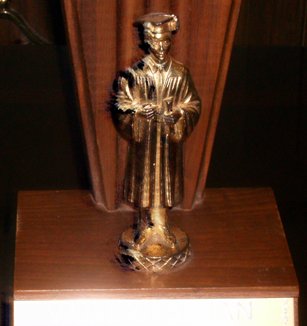All the Synoptics record how a woman with an incurable hemorrhage received miraculous healing through her “impersonal” touching of Jesus (Matt. 9; Mk. 5; Luke 8). Jesus’ subsequent remarkable dealings with this very needy woman pertain vitally to an aspect of Christian worship in churches today that many more believers need to profit from fully:
24 And Jesus went with him; and much people followed him, and thronged him.
25 And a certain woman, which had an issue of blood twelve years, 26 And had suffered many things of many physicians, and had spent all that she had, and was nothing bettered, but rather grew worse,
27 When she had heard of Jesus, came in the press behind, and touched his garment. 28 For she said, If I may touch but his clothes, I shall be whole. 29 And straightway the fountain of her blood was dried up; and she felt in her body that she was healed of that plague.
30 And Jesus, immediately knowing in himself that virtue had gone out of him, turned him about in the press, and said, Who touched my clothes? 31 And his disciples said unto him, Thou seest the multitude thronging thee, and sayest thou, Who touched me? 32 And he looked round about to see her that had done this thing.
33 But the woman fearing and trembling, knowing what was done in her, came and fell down before him, and told him all the truth. 34 And he said unto her, Daughter, thy faith hath made thee whole; go in peace, and be whole of thy plague (Mark 5).
In manifestation of her genuine but not well-developed faith in Jesus, this woman came from behind Him and furtively touched Him in order to be healed of her terrible affliction. Knowing immediately what had happened, Jesus acted in a forceful but gracious manner that compelled her to fall down before Him and acknowledge everything to Him “before all the people” (Luke 8:47).
Jesus thus did not allow her merely to receive her healing in an impersonal transaction that did not require public personal interaction with Him and public acknowledgement of her neediness and testimony to what He had done for her. Only when she had honored Jesus with a public confession of all the truth about what had happened did He give her assurance of her faith and instruction to leave in peace and wholeness.
Jesus’ dealings with this woman to bring about a fitting public response from her supports the proper use of “come forward” style invitations that exhort sinners to come forward and testify publicly if God has ministered graciously and specifically to them in an unmistakable manner to confront them with their sinfulness and minister to them to bring them to Himself.
A number of commentators expound about Jesus’ remarkable dealing with this very needy woman in ways that are consistent with this application:
There is nothing better for those that fear and tremble, than to throw themselves at the feet of the Lord Jesus, to humble themselves before Him, and refer themselves to Him. . . . We must not be ashamed to own the secret transactions between Christ and our souls; but, when called to it, mention, to His praise, and the encouragement of others, what he has done for our souls, and the experience we have had of healing virtue derived from Him. And the consideration of this, that nothing can be hid from Christ, should engage us to confess all to Him (Matthew Henry’s Commentary on the Whole Bible, 1787; bold text is in italics in original).
Dumb [in the sense of not speaking] debtors to healing mercy, be rebuked by the narrative of the Lord’s procedure towards this healed woman. He suffered her not, as doubtless she would have preferred, to depart in silence, to pour out her secret thanksgivings, or at some private meeting to testify her love to Jesus. He would have her, in spite of her shrinking modesty, to come forward before all and declare what she had done and how she had sped. Thus, in her own way, was she a preacher of Christ. And such witness will He have from all His saved ones. “If thou shalt confess with thy mouth the Lord Jesus, and believe in thine heart that God hath raised Him from the dead, thou shalt be saved” (David Brown, JFB, 3:155; bold text is in italics in the original).
She desired secrecy, because an open appeal to Jesus for healing, involving a public disclosure of her condition, would be too embarrassing. . . . The whole ordeal naturally was embarrassing to her, but Jesus knew that it was necessary to give her the assurance that she needed. . . . He required her confession to perfect [her] faith and to give her its full reward” (D. Edmond Heibert, The Gospel of Mark: An Expostional Commentary, 142, 145).
It was not enough to believe in her heart: she must as well confess with her mouth (Rom. 10:9). In front of all the crowd, she must confess, first her great need of healing, and then, the glad fact of her salvation. That it was a costly confession, we can tell from the words in fear and trembling (33). For a woman to speak in public before an Asian crowd, and above all to speak of such personal matters, would be very humbling for her, but humility is an essential within the kingdom of God (R. Alan Cole, Mark in TNTC, 161-62; bold text is in italics in original).
It turns out that the healing does not come free. Jesus forces her to step out on faith and be identified. It will not bankrupt her as the physicians had done, but she must publicly acknowledge her debt to Jesus, that he is the source of her healing. When she does, he blesses her and announces that her faith has made her well (David E. Garland, Mark in NIVAC, 221).
She wants a cure, however, a something, whereas Jesus desires a personal encounter with someone. He is not content to dispatch a miracle; he wants to encounter a person (James R. Edwards, The Gospel according to Mark in PNTC, 165; bold text is in italics in original).
God has inscripturated the accounts of Jesus’ remarkable dealings with this very needy woman for our profit that we might learn better how to honor Jesus in public worship settings. Let’s profit fully from them in this respect by employing and participating in “come forward” style invitations in a proper manner.
Copyright © 2011-2025 by Rajesh Gandhi. All rights reserved.







